Tues - Friday 10 - 5:30, Thurs 10 - 4, Sat 11 - 4
802-872-1042
Click on the corresponding button for the gemstone you want to learn more about! Each gemstone write-up will tell you briefly about the stone’s history, origins, lore, where it’s found now, color pallet, and hardness.
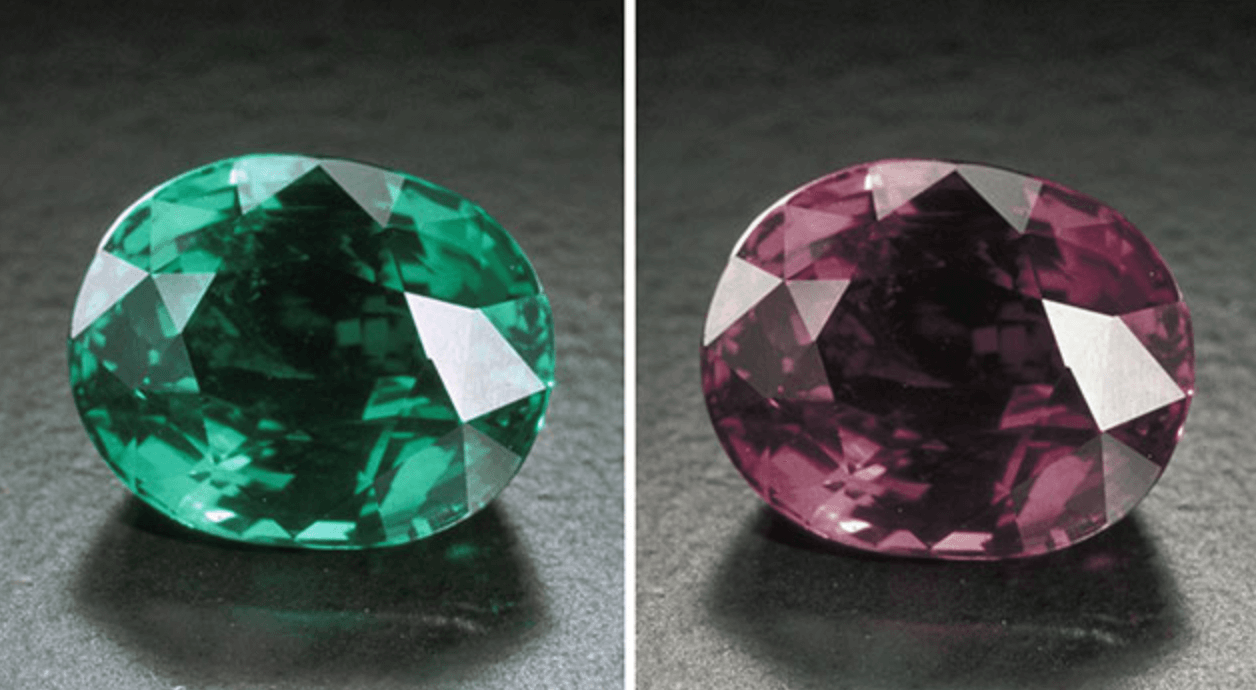
Emerald by day, ruby by night
One of the June birthstones, Alexandrite is a part of the Chrysoberyl family. Alexandrite is one of the rare gemstones used in jewelry. Named after Alexander II Alexandrite was initially found in the 1830s in the Russian mountains. Alexandrite is a relatively ‘new’ gemstone. Alexandrite is a color change, meaning depending on the light source the stone will change colors. Alexandrite has been described as ‘Emerald by day and Ruby by night.’ Meaning that in daylight it looks like an emerald and at night under “warmer” light or candlelight it will change to a reddish color.
Alexandrite is 8.5 on the hardness scale, meaning that it is very durable and suitable for everyday wear. Alexandrite is now found in Sri Lanka, East Africa, and Brazil. Original ural mountain Alexandrites (Russian) can still be found in some estate jewelry, are very rare, and still are the gold standard for the unique gemstone.
February’s birthstone
February’s birthstone, Amethysts have one of the most recognizable deep purple colors in all gemstones. The birthstone for February has a long history. Due to the wine-like purple color, early Greeks used Amethyst as a connection to Dionysis the Greek God of wine and pleasure.
Early in its history, Amethyst was just as rare and desirable as Rubies and Emeralds. While Amethysts are still a coveted gemstone, the 19th century changed their scarcity of them. Massive deposits of Amethysts were found in Brazil, where a large amount of Amethysts still come from today.
The most common treatment is heating. Which enhances the natural color and if done at a hot enough temperature can completely change the color. Amethyst is a 7 on the Mohs hardness scale and is part of the Quartz mineral family.
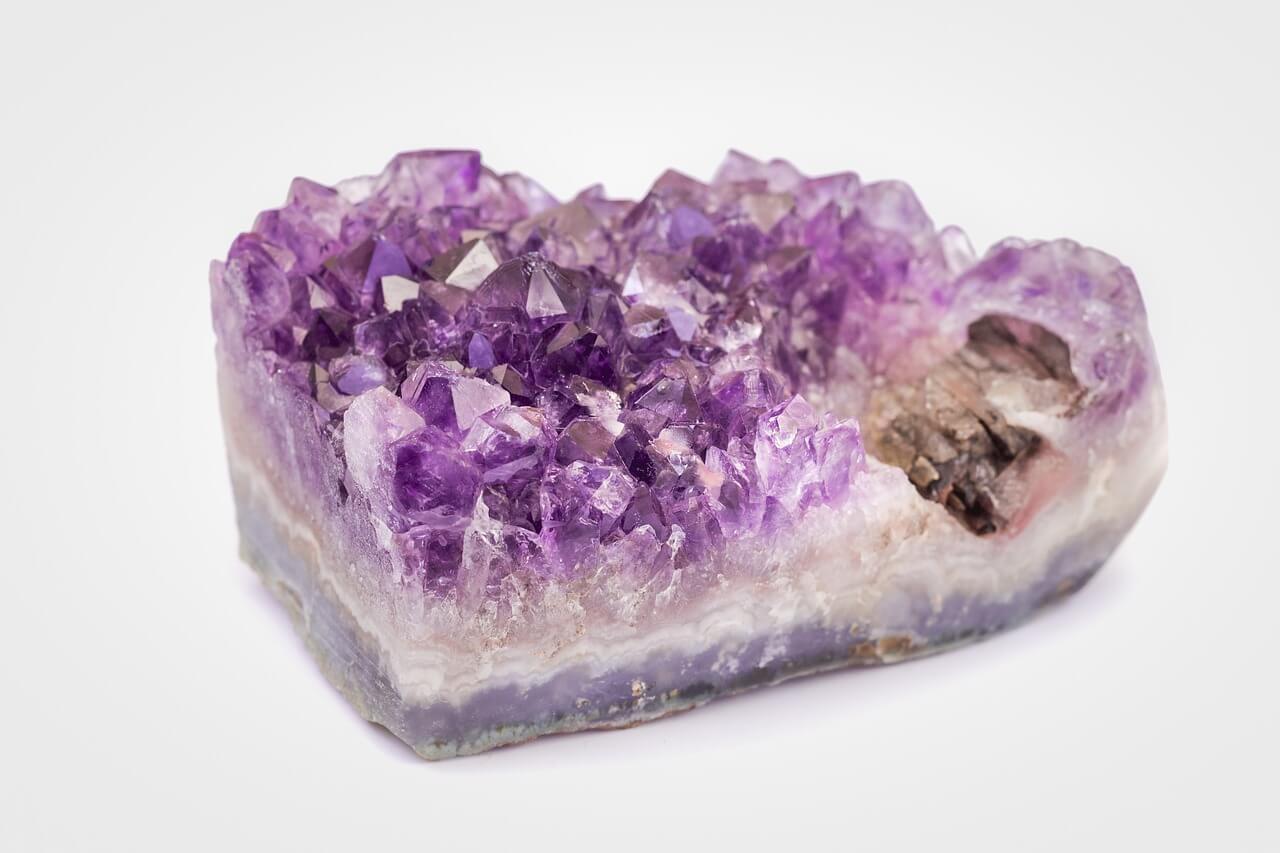
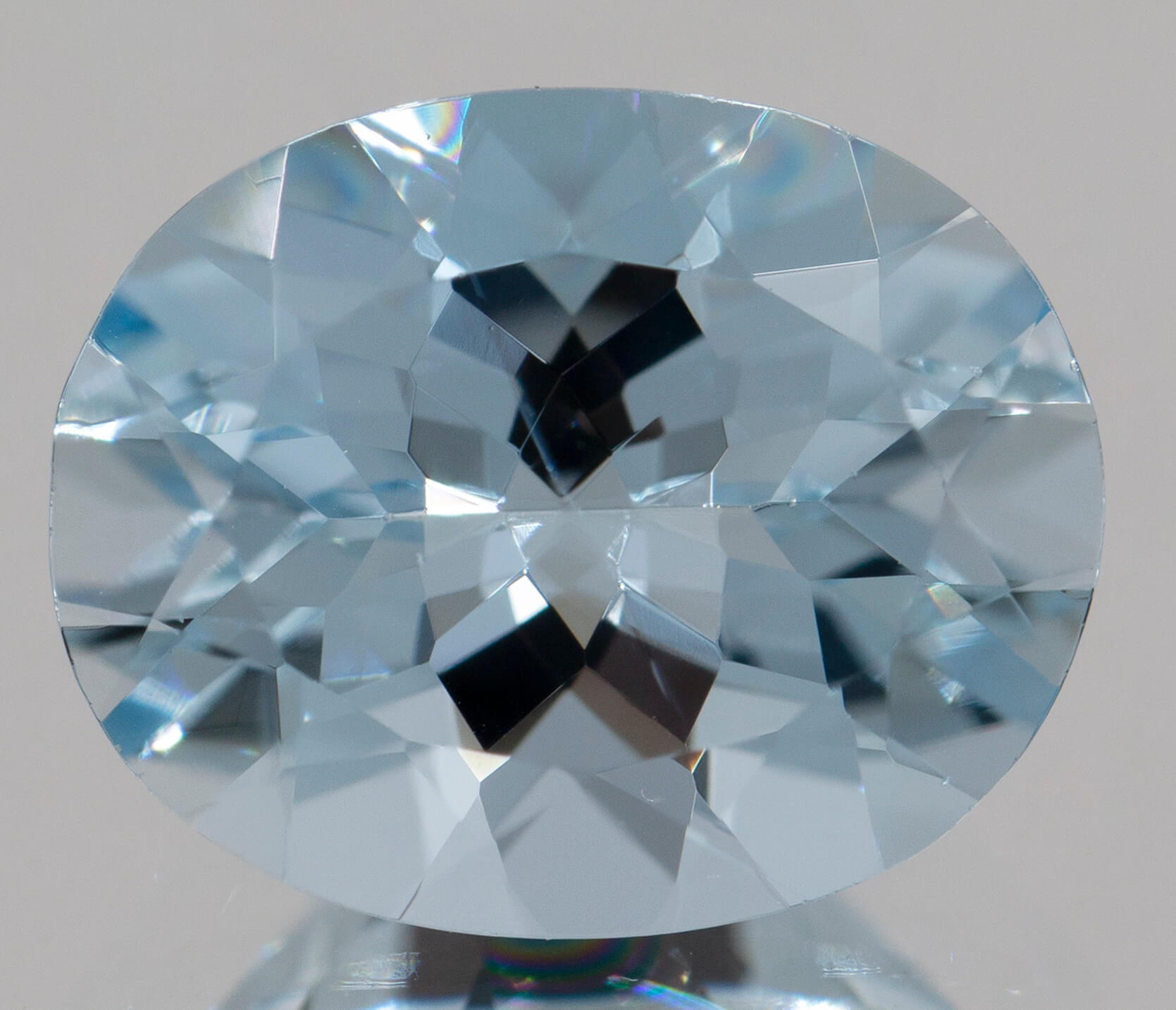
A sailor’s good luck charm
The name speaks for the awesome color of this gemstone. The birthstone for March, Aquamarine is part of the beryl family. Aquamarines are found in a spectrum of light blue colors, from greenish blue to deep blue. Traditionally, the more intense and true blue color the stone has, the more rare it is. Aquamarines are mainly mined in Brazil, but can also be found in Nigeria, Madagascar, Zambia, and Pakistan. They are a 7.5 – 8 on the Mohs hardness scale, suitable for gemstone rings and everyday wear in earrings, pendants, and bracelets. Aquamarines are said to keep sailors safe at sea, which corresponds well with the name. They were often given to sailors who were traveling great distances. Aquamarine is a relatively ‘new’ discovery in the world of gemstones. They were discovered in 1732 and by the end of the 18th century, large amounts of the stone were being mined and sent to Western Europe.
The largest cut Aquamarine stone in the world is called the Dom Pedro. It is a shocking 10,363 carats and is 14 inches long with cross cuts along the Washington Monument-like shape. Today it lives in the Smithsonian National Museum of Natural History.
The birthstone of November
Along with Topaz, Citrine is the birthstone for November. Citrine is a member of the Quartz mineral family. The color of Citrine ranges from yellow to orange to a light orangery red. Quartz family gemstones have been used in jewelry for thousands of years. Today, completely natural Citrine is rare. Most Citrine in jewelry now is a result of heat treatment of Amethyst Quartz.
Naturally occurring Citrines have been found in Brazil, Madagascar, Norway, and Bolivia to name a few. Prior to modern technology, Citrine was often mistaken for Topaz as they can share a similar vibrant orange color. Citrine is said to be a self healer and promote growth, and self-improvement. Citrine is also recognized as the gemstone that commemorates the 13th anniversary and is a 7 on the Mohs hardness scale.
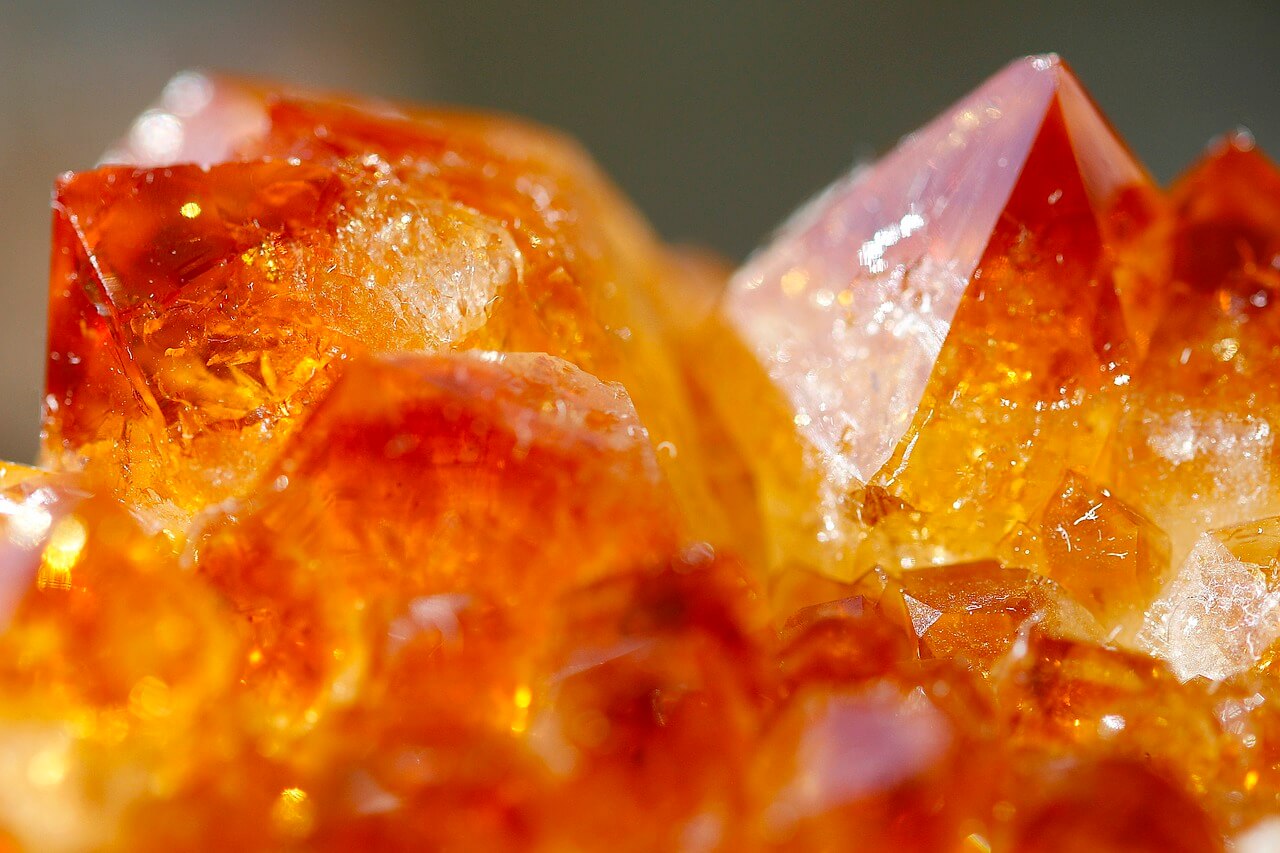
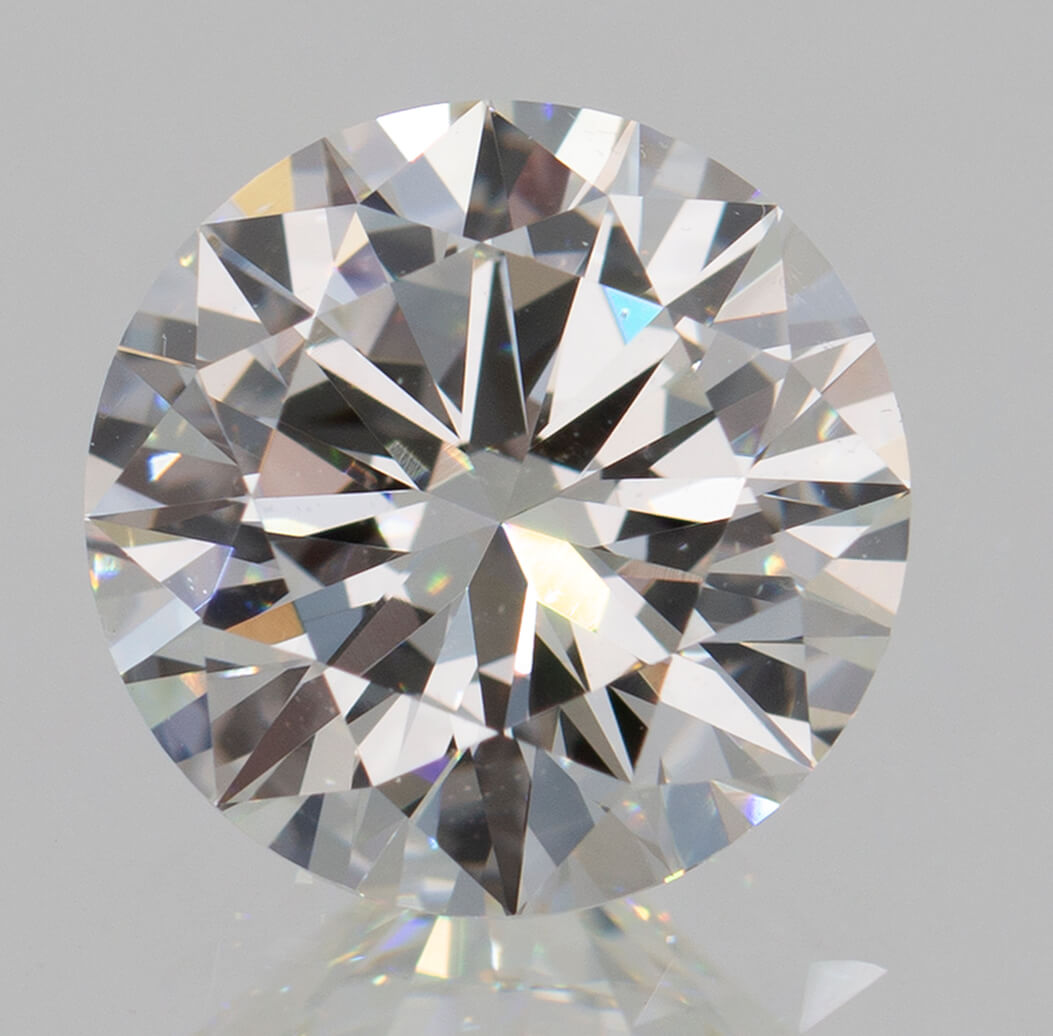
The most coveted gemstone in the world
Diamonds have been a coveted gemstone since the first century AD. Russia and Botswana have emerged as some of the biggest Diamond producers in the world. Diamonds can also be found in the United States, Siberia, Brazil, China, and South Africa, among many others.
Diamond is the only 10 on the Mohs Hardness Scale. Diamond is also 58 times harder than the Corundum (Ruby and Sapphire family which is a 9 on the Mohs Scale. Diamond is still the most coveted gemstone in the world. It’s widely used for engagement rings. Diamonds became the dominant stone in engagement rings in 1947 after De Beers had the famous ‘a diamond is forever’ marketing campaign.
Diamonds are graded on the ‘Three C’s:’ Color, Cut, and Clarity. Color graded on a D through Z scale. D is the most ‘colorless’ stone and Z is more yellow.
Cleopatra’s favorite
Emerald is May’s birthstone. Emerald is a staple in gemstone history. Emerald mines are traced back to at least 330 BC during Cleopatra’s rain. She was said to have an affinity for the deep green, making Emerald one of the oldest gemstones known in history. Emerald is the most known and coveted gemstone in the Beryl family- aquamarine (blue), and morganite (pink)
Emeralds are known for their rich green color. They are found in a range of green hues such as blue and yellowish green. Emeralds are most commonly found in Columbia, Brazil, and Zambia. They can be found in many other places but these are the three most common places.
Emeralds are commonly treated with oil after they are cut and polished. This means that cleaning them takes more care than most other gemstones. You want to be careful not to affect the PH of the oil because it can alter the color of your Emerald for good. Emeralds are also between 7.5 – 8 on the Mohs hardness scale. They are somewhat soft for rings especially. They can be scratched in everyday wear, but are perfect for earrings, necklaces, and pendants and can be fantastic special occasion rings, but we do not often recommend Emeralds for engagement rings.
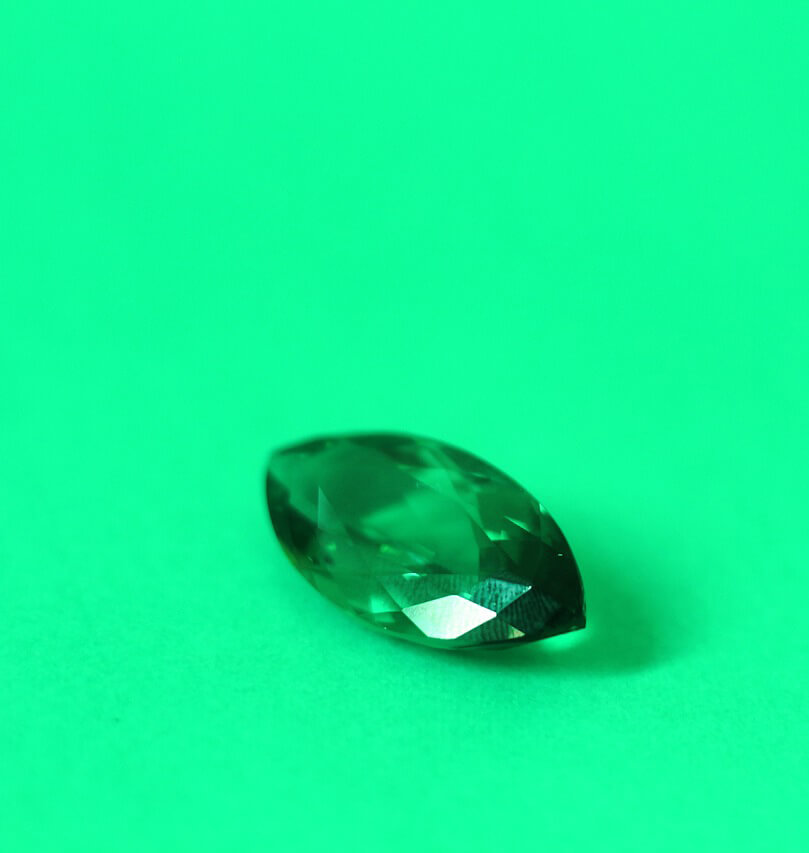
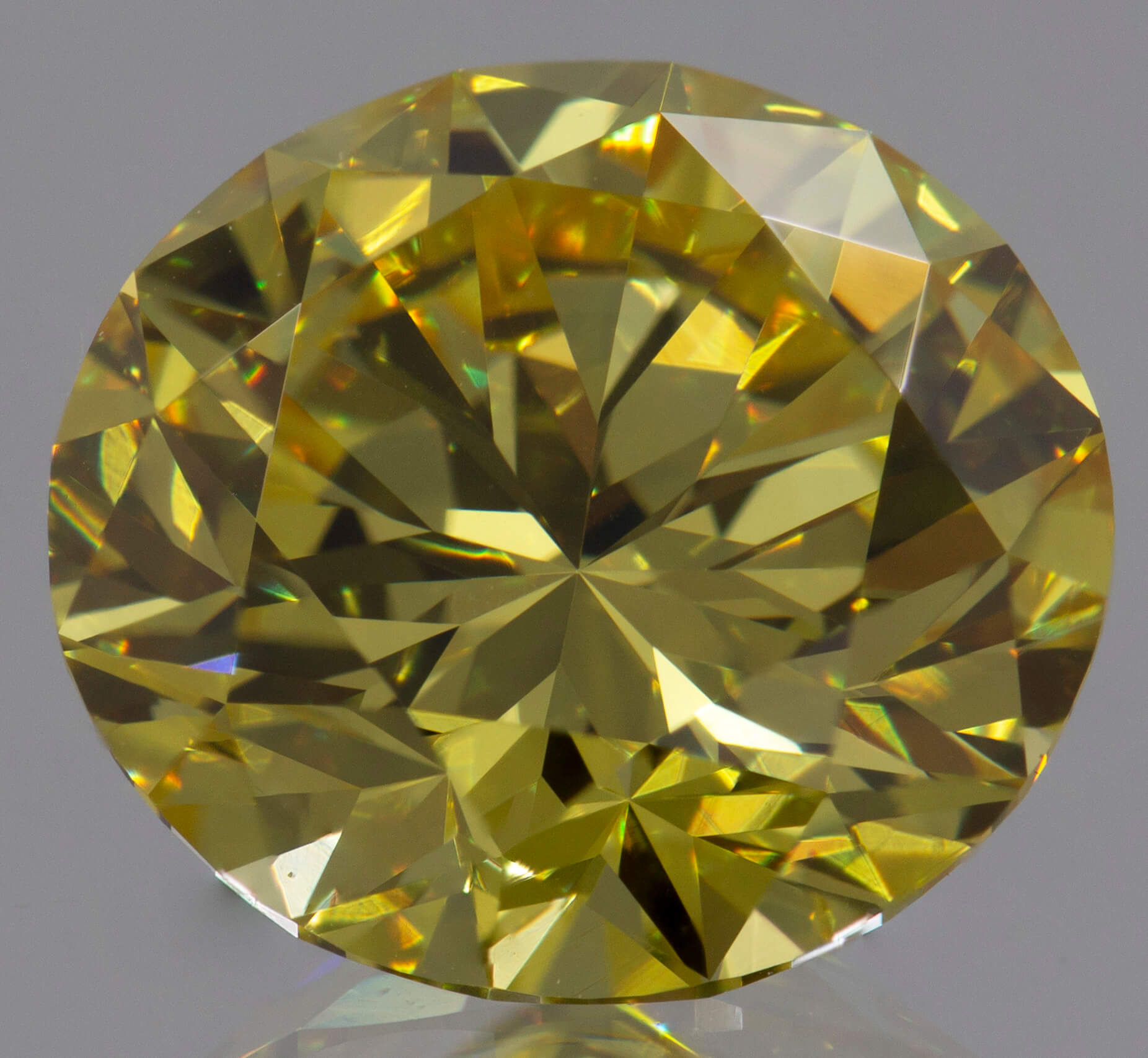
As rare as they are beautiful
Only 1 in 10,000 diamonds are ‘fancy colored’. A true fancy-colored diamond is extremely rare. All fancy-colored diamonds are not equally valuable. For example, brown and some yellow fancy yellows are more frequently occurring than green and red colors for example. Fancy-colored diamonds are the same makeup as traditional diamonds.
Fancy-colored diamonds have the same grading scale for clarity as the more traditional ‘white’ diamonds. The color grading scale is different though. A basic breakdown of fancy-colored diamonds is: Fancy (lighter color) Fancy Intense- more saturated than fancy and fancy vivid- the most saturated color. Fancy-colored diamonds have increased in popularity in recent years
Fancy-colored diamonds are not limited to yellow. Diamonds can also be found in red, orange, green, blue, pink, purple, and gray. These colors are incredibly rare, Fancy colored diamonds can also come in mixed colors as well for example purplish pink or brownish yellow.
A gemstone with some history
Garnet has one of the oldest gemstone histories and lours. Red Garnets were found on Egyptian pharos as they were said to be prized possessions in the afterlife. During the Pliny times, Garnets were some of the most widely traded gemstones. They are said to The amount of Garnets vastly increased around 1500 when a large deposit called the Bohemian Garnet Deposit in Central Europe.
Garnets can come in almost any color. They are best known for the traditional red as those are the most common as well. Green garnets, also known as Tsavorite garnets are named after Tsavo East National Park in Kenya. They are also found in Tanzania which is also home to Tanzanite. Other colors are much more scarce. Garnets are a 7.5 – 8 on the Mohs hardness scale. suitable for occasion gemstone rings and everyday wear in earrings, pendants, and bracelets. Garnets are rarely treated as they have a very strong natural color and clarity.
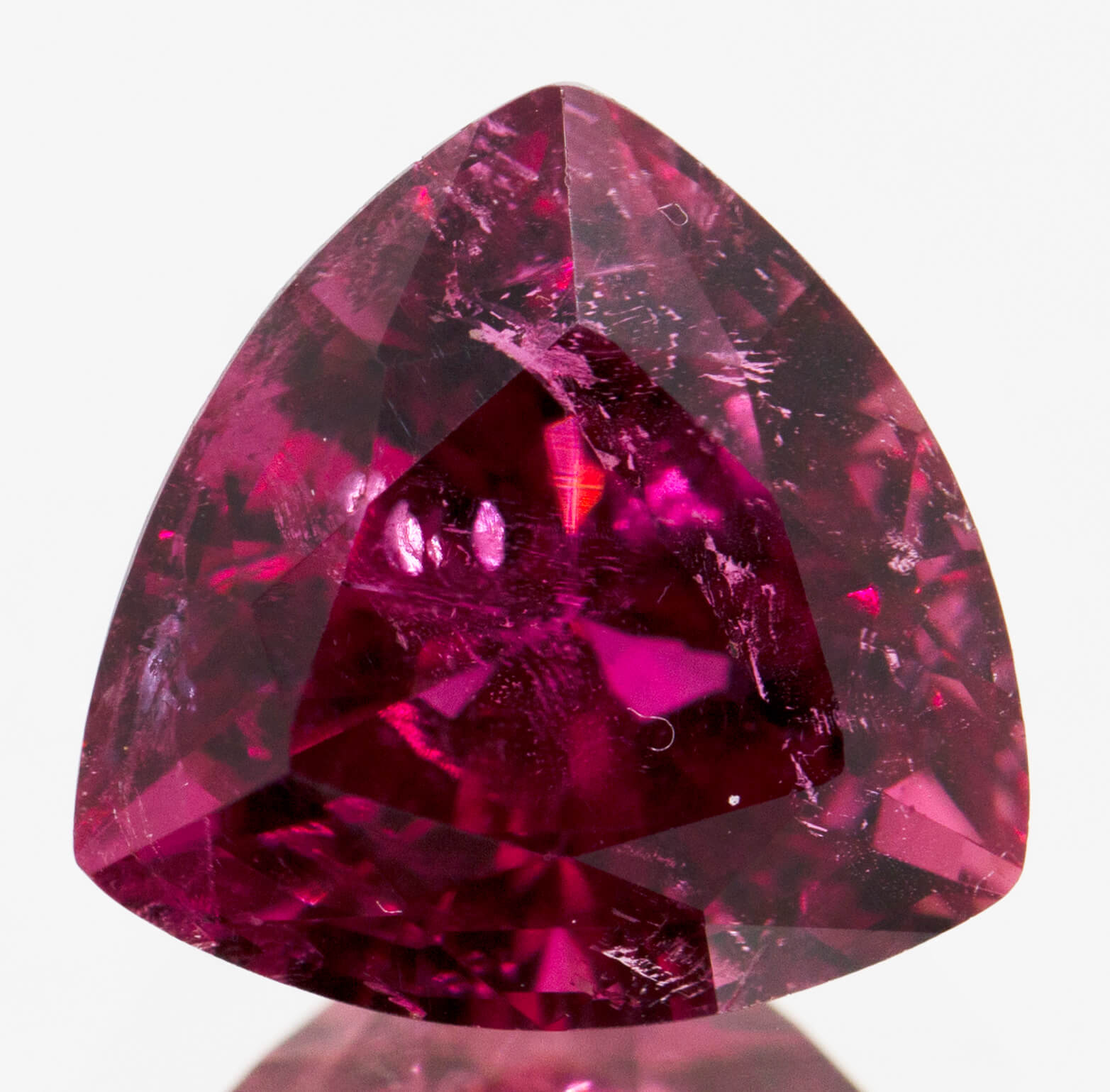
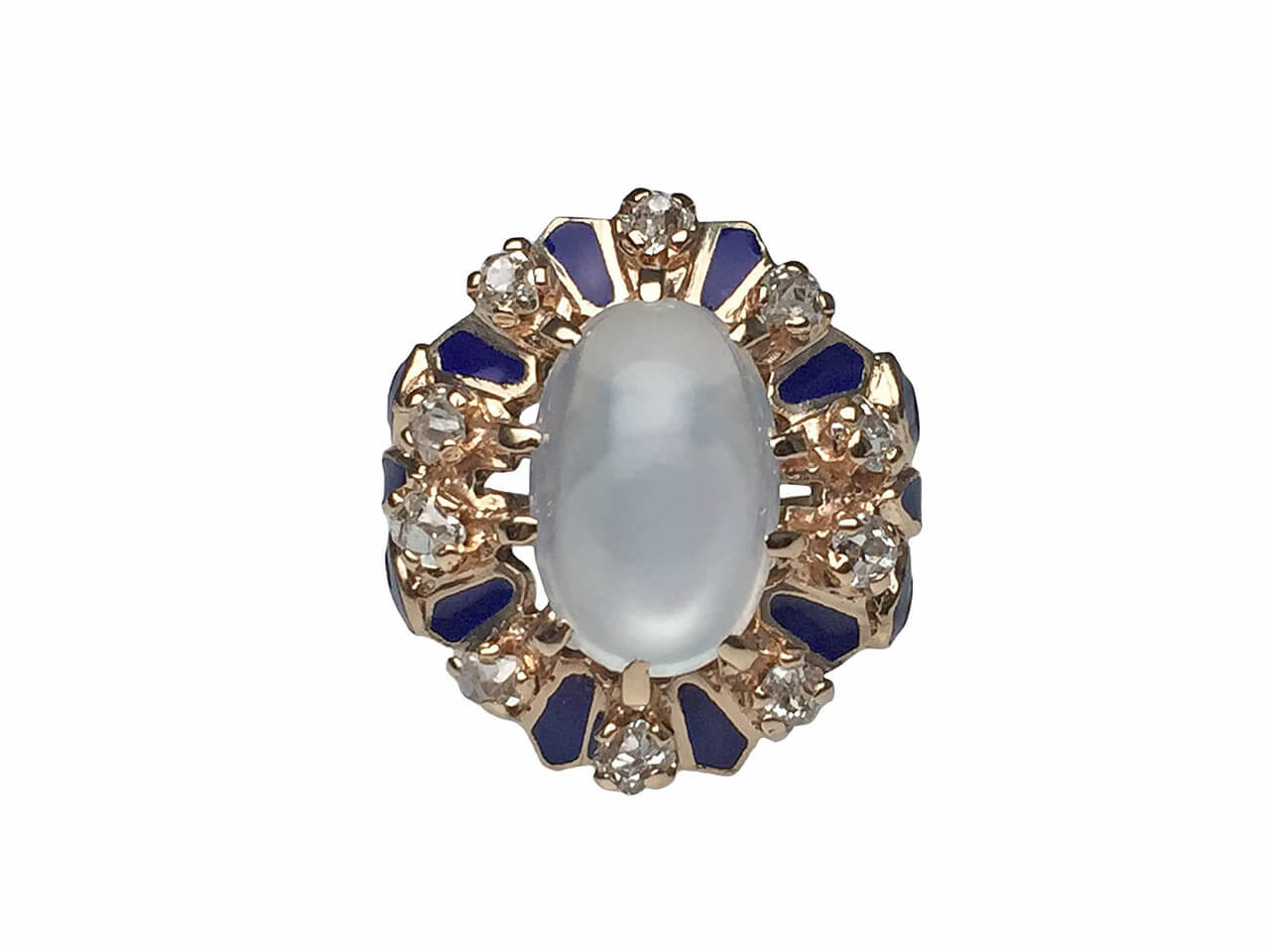
Light from within
Moonstone is aptly named as it has a lunar-like luminescence. Colors of a moonstone range widely. They can have hues of almost every color in the notable streaks that Moonstones are recognized for. Moonstones are part of the feldspar mineral group, during formation light falls on the stones creating a phenomenon known as adularescence. This is why Moonstones have the illusion that there is light within the stone.
Moonstones can be in many colors from colorless to white, including gray, green, peach, and brown. It is a 6 – 6.5 on the Mohs hardness scale. Moonstones are said to bring good luck and were first believed by Hindu mythology to be solidified moonlight. Even today, the lunar luminescence makes the stone endearing.
Moonstones have been a coveted gemstone dating back to ancient civilizations. They are thought to be discovered near Mount Adular in Switzerland. Now they are mined in Sri Lanka and Southern India.
One of the most precious stones
Octobers birthstone, Opals was thought to be the most precious stone by the Romans because of the many different colors the gemstone has. The Bedouins believed that Opals contained lightning and fell from the sky during thunderstorms. Opals can be in almost any color. Opals almost always have shades of many different colors that streak through the stone. They were thought to be found as early as 250 BC in Eastern Africa. Today they are mined in primarily Brazil, Honduras, and the Western United States.
Up to 20% of an Opal is water. Care and cleaning of opals can be sensitive. They are also on the softer side of gemstones, being a 5 to 6.5 on the Mohs hardness scale. You should not leave them for too long in direct sunlight when it’s hot. This can dry out the opal and affect its color and even shape.
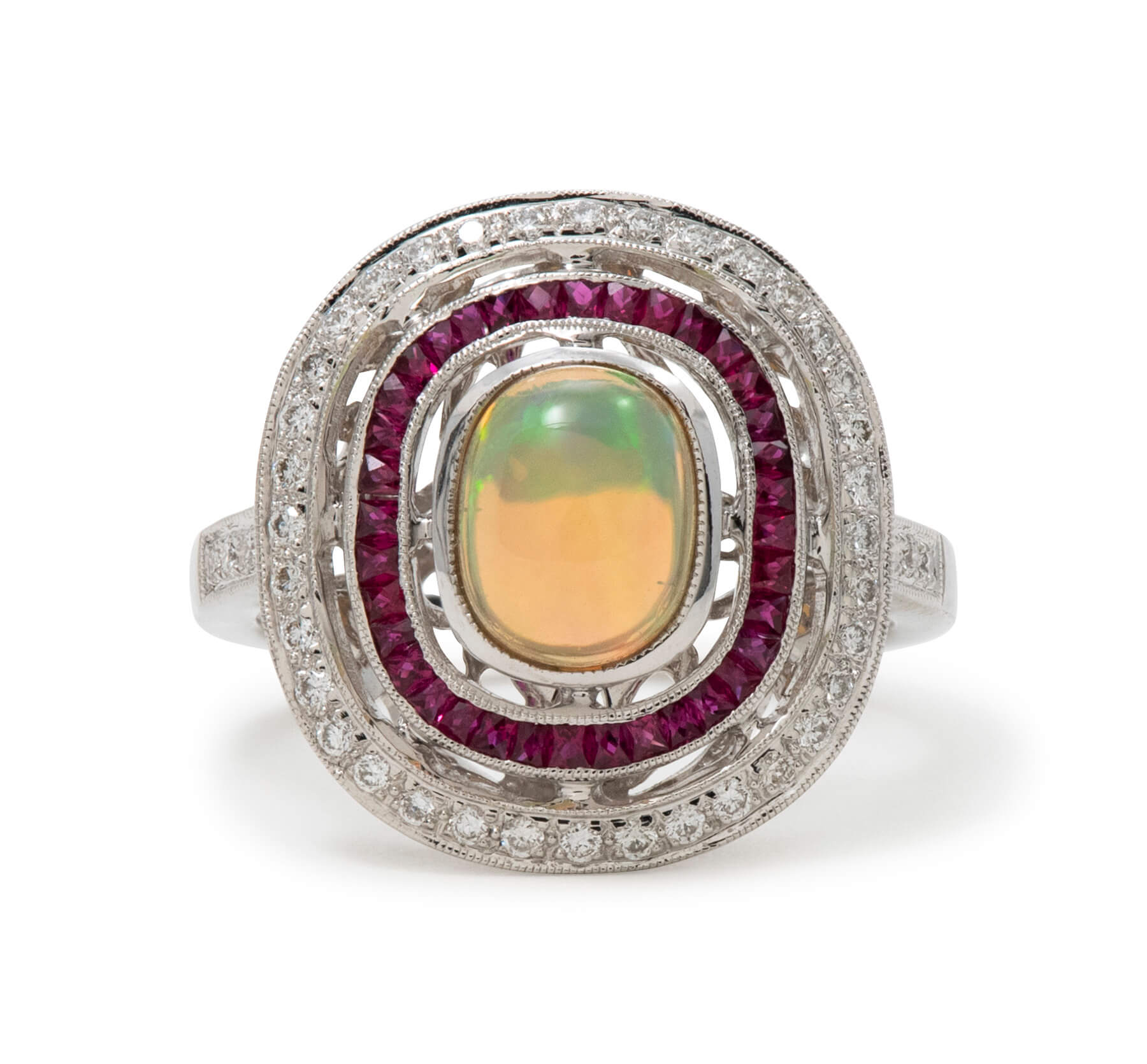
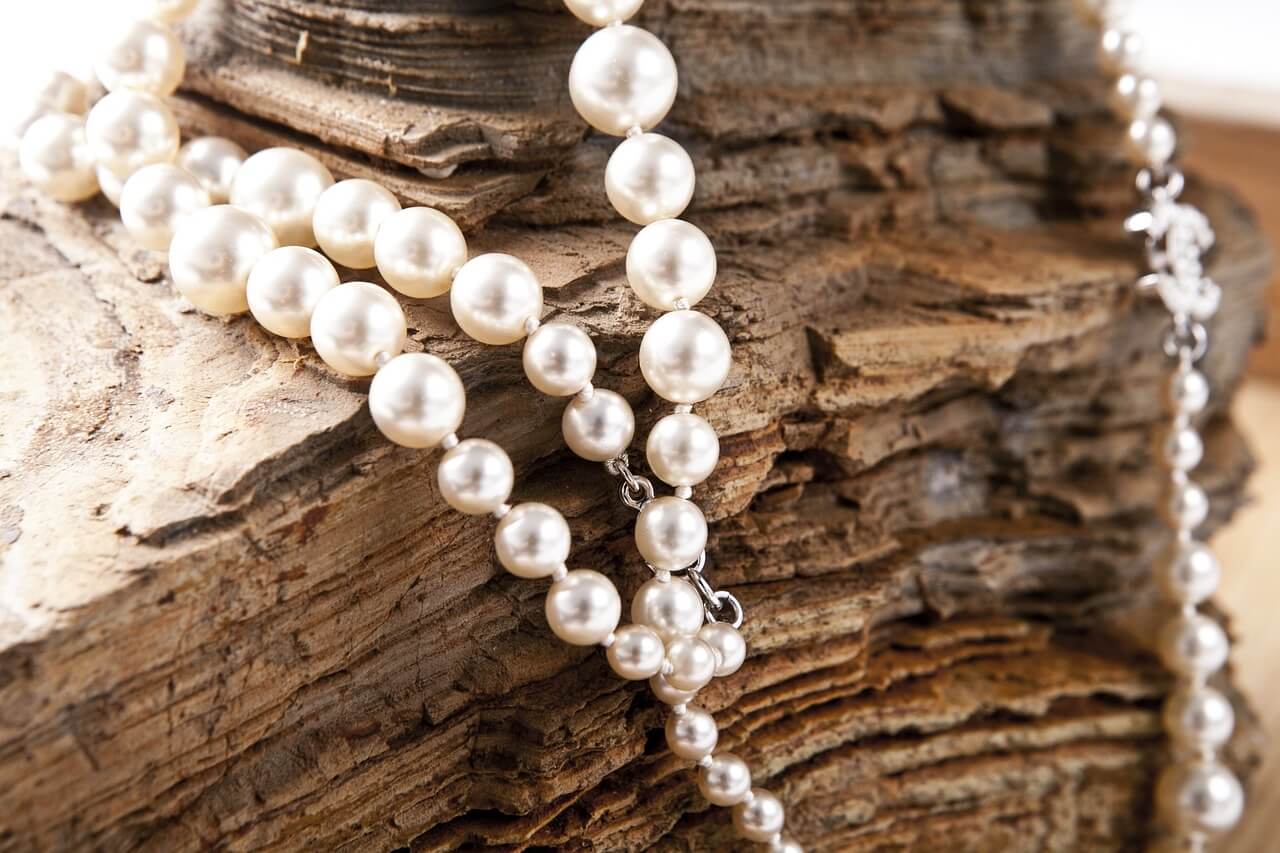
History’s most famous gemstone
The gemstone for June, and perhaps the most ‘famous’ gemstone in history, Pearls have been coveted for thousands of years. Pearls were thought to originate from the Persian Gulf. They have always had a lure of mystery, power, and the life-sustaining nature of water. They are a 2.5 – 3 on the Mohs hardness scale. Since they are on the more fragile side, it’s important to store your pearls in places where they won’t be scratching into your other gemstones. Pearls can be in an array of colors, from classic white and cream colors to green, gray, blue, and more. There are many different kinds of Pearls, differing based on the mollusk they come from or the ocean. Some of the most prominent Pearl types are Akoya, Tahitian, and Baroque.
Now, almost all Pearls are cultured in some fashion. This means that they are ‘man-made’ for lack of a better term. Pearls are formed when something (like a piece of sand) makes its way into an Oyster or Muscle. Then nacre forms around the debris and creates the pearl.
Today almost all the freshwater Pearls on the market come from China. The first cultured Pearl was in Japan in 1893. Saltwater Pearls can be found off the coast of Japan, French Polynesia, and Australia. Natural Pearls are extremely rare now, and therefore very expensive.
The gem of the sun
Peridot can be known as the ‘extreme gem’. It is found in lava, and deep in the earth’s crust. It is best known for its intense yellowish-green color but has a range of colors on the green-to-yellow-green spectrum.
The first known Peridots were mined by the ancient Egyptians on the Red Sea. To this day, some of the largest Peridots ever found reside in museums came from there. Nicknamed ‘the gem of the sun’ Peridot is the birthstone for August and is the 15th anniversary stone. It is believed to be the gem of light and protects its wearer from the darkness. Today, Arizona is the primary source for Peridots, and it is a 6.5 – 7 on the Mohs hardness scale.
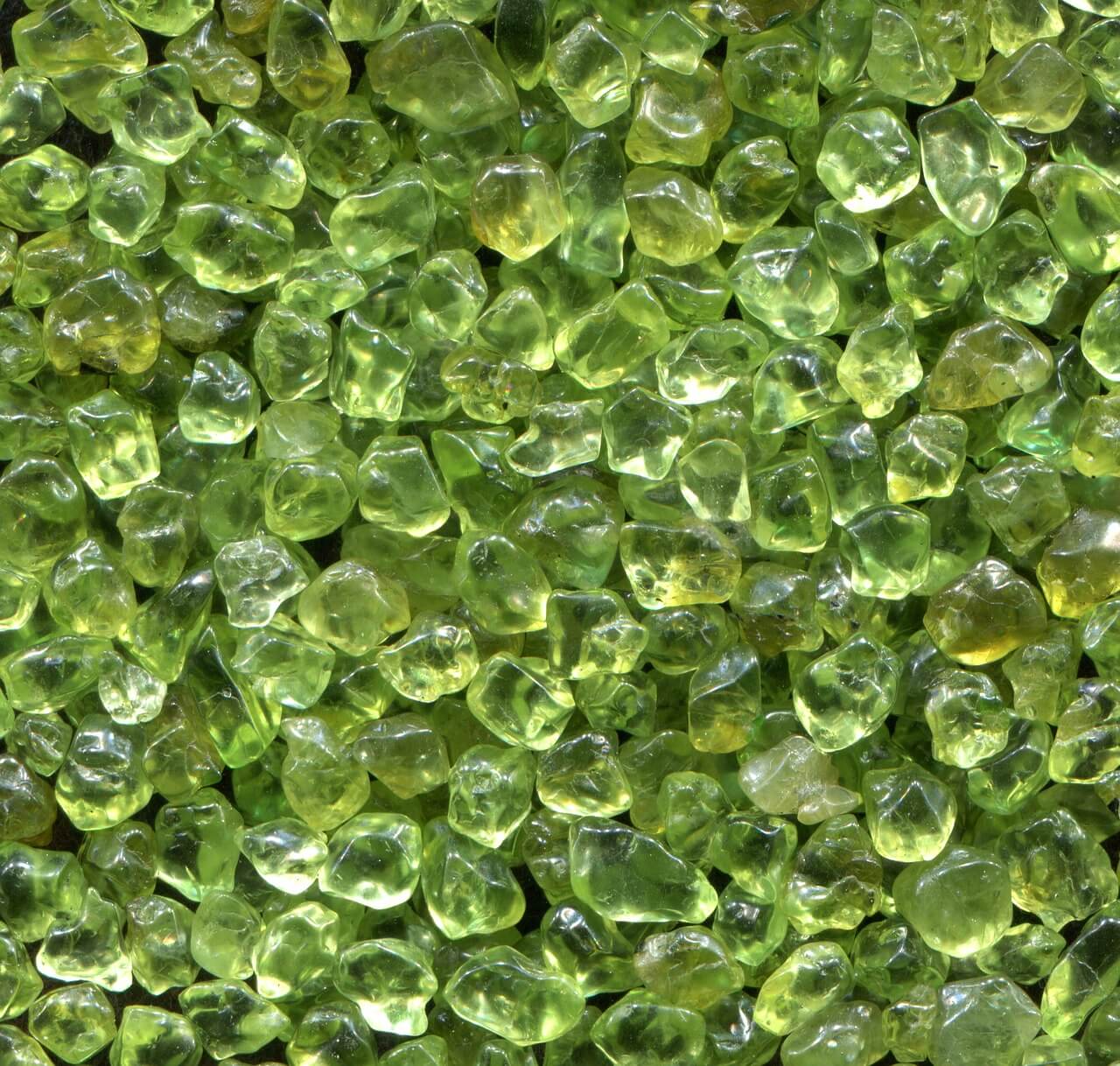
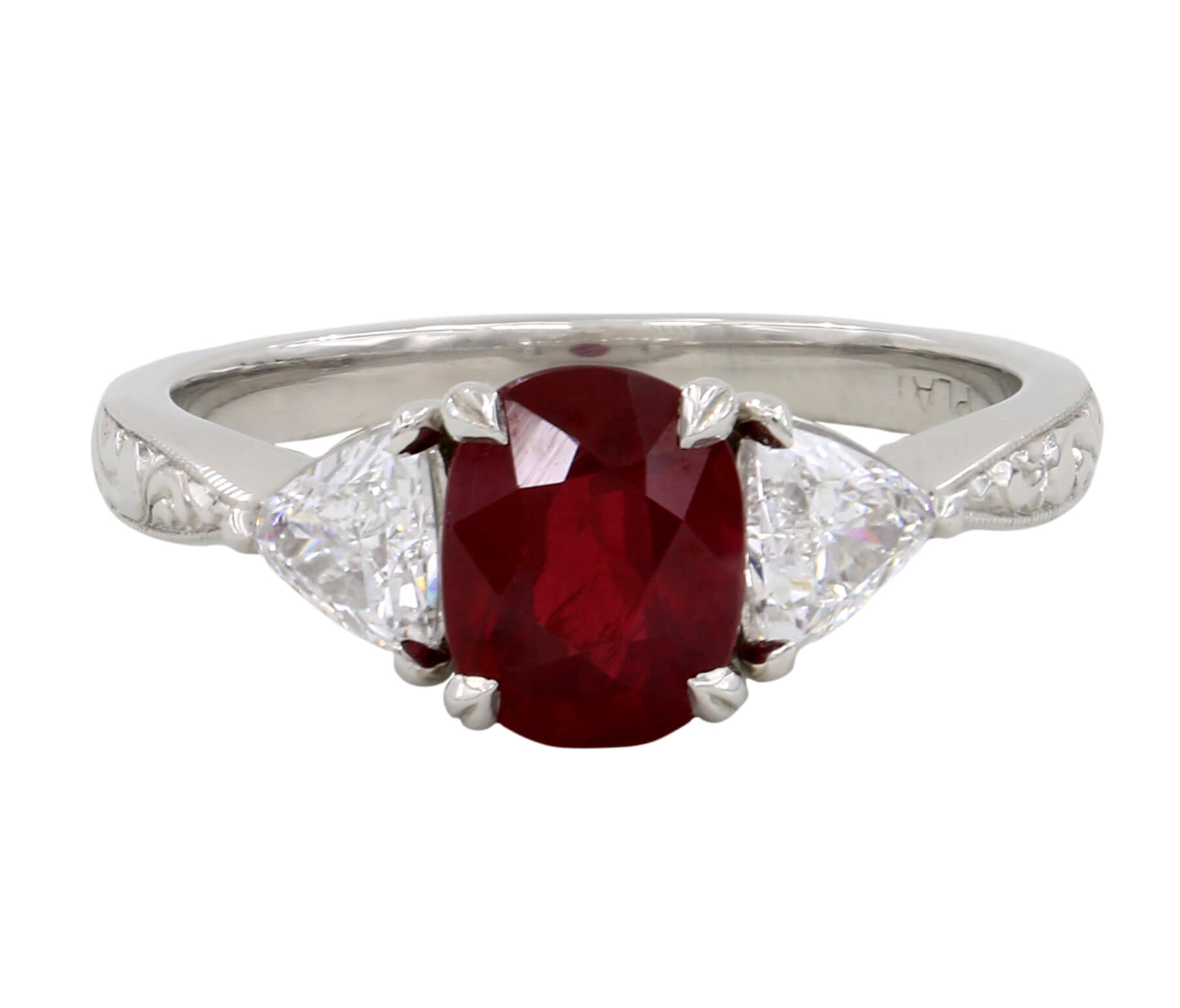
One of history’s most prevalent gemstones
Rubies are part of the Corundum family along with Sapphires. They are the second hardest group of gemstones with a 9 out of 10 on the Mohs hardness scale, meaning they are extremely durable and suitable for everyday wear.
Ruby is one of the most prevalent gemstones in history. Almost all cultures have coveted the rich red color and are still relevant today. Ruby’s have long signified wealth and success. Spanning from Roman times to European royalty, They are thought to be discovered in Myanmar (Currently Burma) around 600 AD.
Ruby is known for its vibrant red color. Rubies have a much smaller array of colors compared to other gemstones. Rubies can range from a deep blackish red to pinkish red. The bright true red is still the most coveted color and therefore the most expensive per carat.
Some of the highest-quality Rubies come from Myanmar, but can also be found in Afghanistan, Australia, India, Sri Lanka, Mozambique, Madagascar, and the United States, to name a few. Heating is the most common Ruby treatment. Heating a Ruby enhances the color and will make the stone look cleaner by “melting” away internal inclusion/ silk found naturally in the stone. Unheated Rubies are very rare and therefore incredibly expensive per carat. Unheated Rubies are among the highest prices per carat out of any gemstone in the world.
Available in every color of the rainbow
Sapphire is the other half of the Corundum family. Also a 9 on the Mohs hardness scale, Sapphires are a great alternative to Diamonds in engagement rings as they are very durable and suitable for everyday wear. Perhaps the most famous Sapphire ever was Princess Diana’s engagement ring in 1981. This increased the popularity of Sapphires in engagement rings.
Sapphires are a recent discovery in the world of gemstones. Found around 1880 about 4,500 meters up in the Himalayas. They were quickly a popular gemstone. Today the ‘bluest’ Sapphires are mined in Kashmir, India. They are also mined in Montana, Eastern Africa, and Madagascar.
Another reason why Sapphires are such a popular stone is because of their color versatility. Sapphires come in every color of the rainbow (except for Red because then it’s a Ruby). Sapphires are best known for their signature blue color similar to Rubies, Sapphires’ most common treatment is heat to enhance the color. This is common practice for Sapphires, meaning that unheated Sapphires are more rare and valuable. Their versatility in color and durability has made them a popular alternative to diamonds as the center stone in engagement rings.
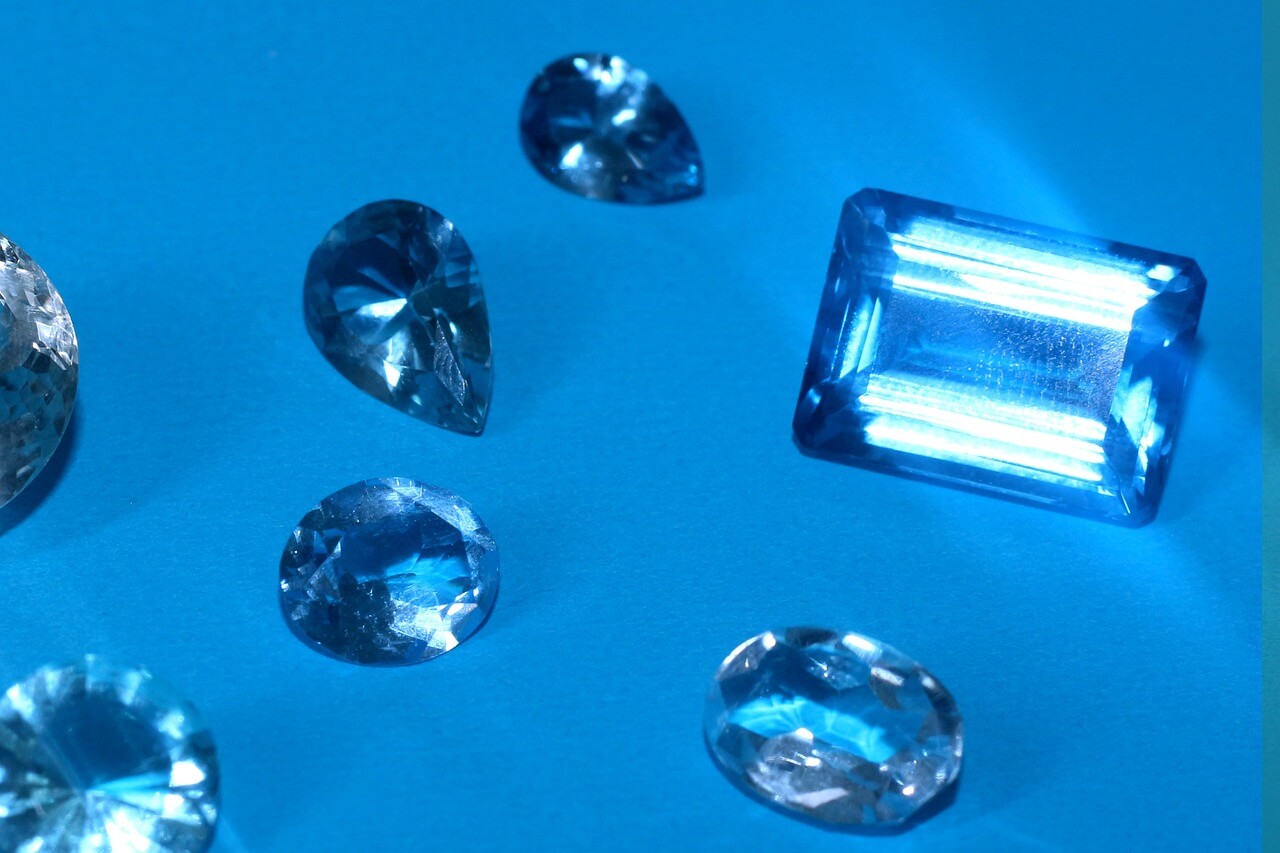
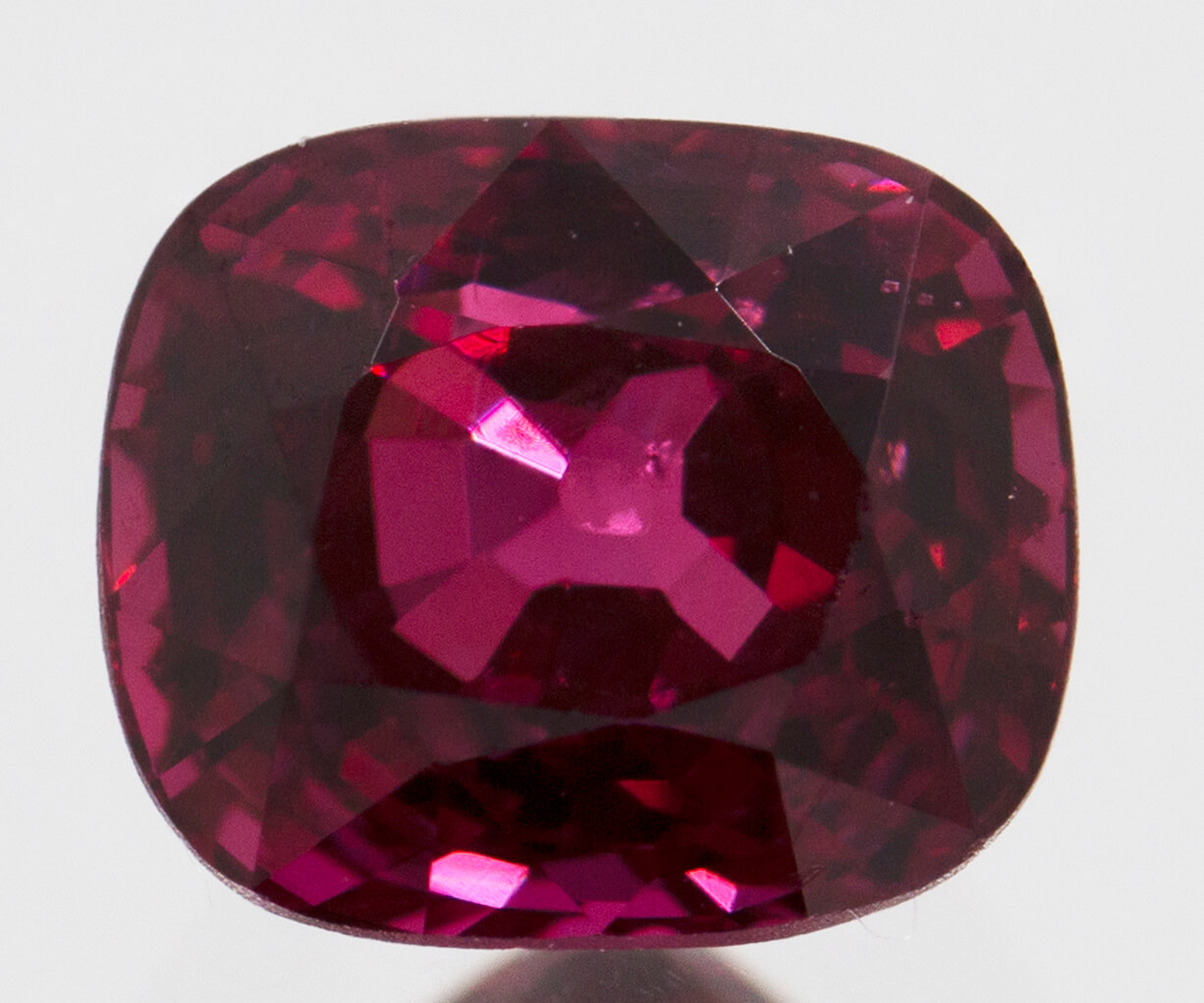
August’s birthstone
The August birthstone, Spinel is often mistaken for Ruby, but Spinel itself has a rich history. There are two famous Spinel’s that are some of the English Royal Families’ prized jewels. The ‘Black Prince’s Ruby’ is a 170-carat Spinel set on the Maltese Cross on the Imperial State Crown of England. The ‘Timur Ruby’ is a 352-carat Spinel set in a British Crown Necklace which was thought to be a Ruby until the 1830s.
Spinel is an 8 on the Mohs hardness scale, and is a less expensive alternative to Rubies, as they share a similar color when red. While shades of red are the dominant color for Spinels, they can also be found in shades of pink, purple, and blue.
Spinels are found on several continents, including their primary sources: South Asia, and South America, most commonly in the following countries: Myanmar, Vietnam, Thailand and Sri Lanka, and Afghanistan Heat treatment is common practice for Spinels as it enhances the natural color and takes away some of the inclusions on the stone.
A newcomer to the world of gemstones
Tanzanite is new to the world of gemstones. The most accepted story about the discovery of Tanzanite comes in 1967 when a Masai tribesman found the gemstone out of the ground in Tanzania. Shortly after, 90 different claims were made to mine the area even though no one was quite sure what the colorful gemstone was. Tiffany & Co. then made a deal to become an international seller, and promptly increased the popularity of the gemstone.
Tanzanite can be shades of blue to shades of purple and is one of the birthstones for December. It is a 6 – 7 on the Mohs hardness scale. Tanzanite is commonly heat treated to take a more brownish color (the way it’s found in nature) to the bright blue or purple associated with the stone as it is in jewelry. Tanzanite is said to enhance communication and help with good karma. Tanzanite is still only mined in Tanzania.
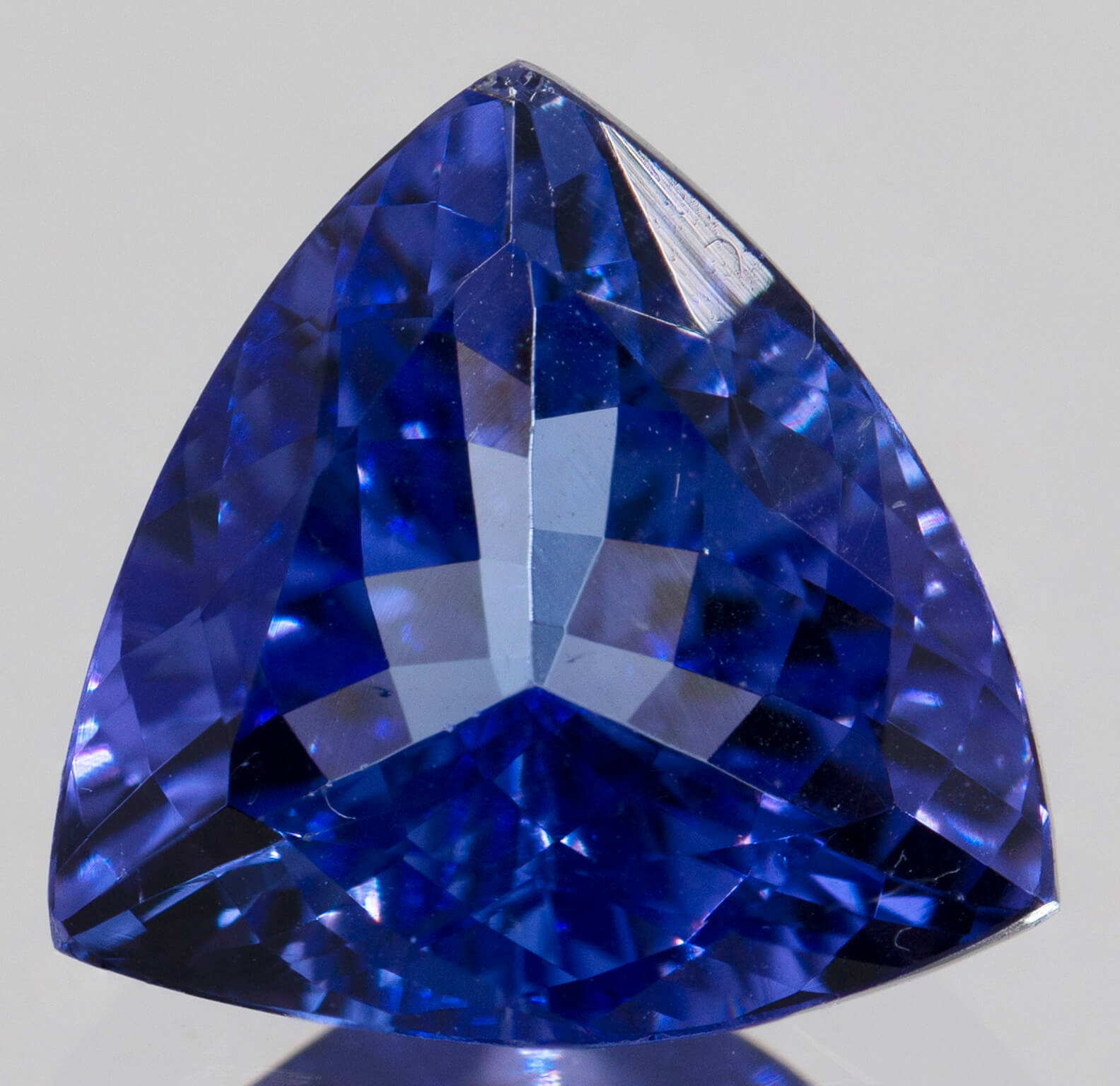
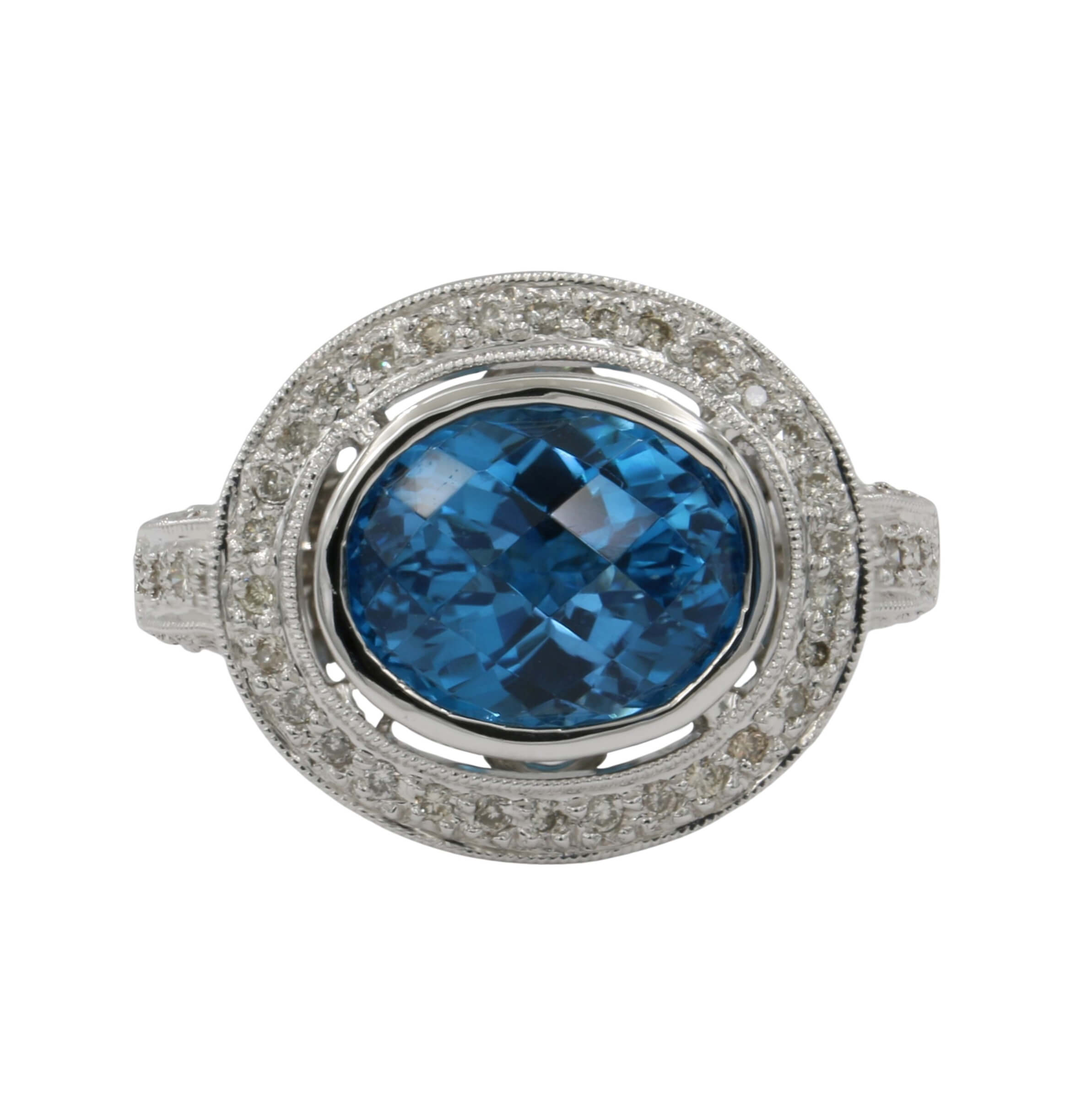
One of November’s birthstones
One of the birthstones of November (the other being citrine quartz). Topaz comes in just about every color of the rainbow. Topaz is frequently treated by irradiation to enhance the color of the natural stone once it is extracted. “The ancient Greeks believed that topaz gave them strength. In Europe, during the Renaissance (the period from the 1300s to the 1600s) people thought that topaz could break magic spells and dispel anger.” (GIA)
Topaz has a range within the orange and warm brown color pallets. From vibrant orange to a rich brown Topaz has a unique set of colors. Topaz is an 8 on the Mohs hardness scale and is another gemstone that is great in rings, and any jewelry in between. Topaz can be found in many places as well, most prominently in Brazil, the United States, and Madagascar.
Topaz’s common treatment is heating. Unlike some of the other gemstones that get heated to enhance the natural color, when heated, Topaz can actually completely change color. For example, reddish brown natural-colored Topaz, when heated can turn to pink. The rarest color for topaz when not treated is Imperial topaz- which is a pinkish color sometimes with a modifier of orange. Imperial topaz is somewhat common in Edwardian jewelry.
A calming gemstone
The birthstone for October, Tourmaline is also the gemstone associated with the 8th anniversary. Tourmaline has one of the broadest ranges of colors in all gemstones. Tourmaline can come in almost every single hue. Rubellite is the term for tourmalines in shades of red and pink,
The first Tourmaline was thought to be found in the 1500s by a Spanish explorer, who uncovered a green Tourmaline and confused the bright gemstone for an Emerald. This thought prevailed until the 1800s when scientists made the distinction between the chemical makeup between Emeralds and Tourmalines. While they can be found all around the world, they are mined today primarily in Brazil and Africa.
Tourmalines are said to calm nerves, counter anger, and resentment, and relieve stressful thoughts. The most common treatments are heating and irradiation. Heat treatments in Tourmalines can change and enhance the color of the natural stone. These treatments are common practice as most all Tournamlines have been heat treated. Pariaba Tourmalines are a recent discovery in the 1980s. They are more expensive than a normal Tourmaline, as they have a really bright almost neon color to them.
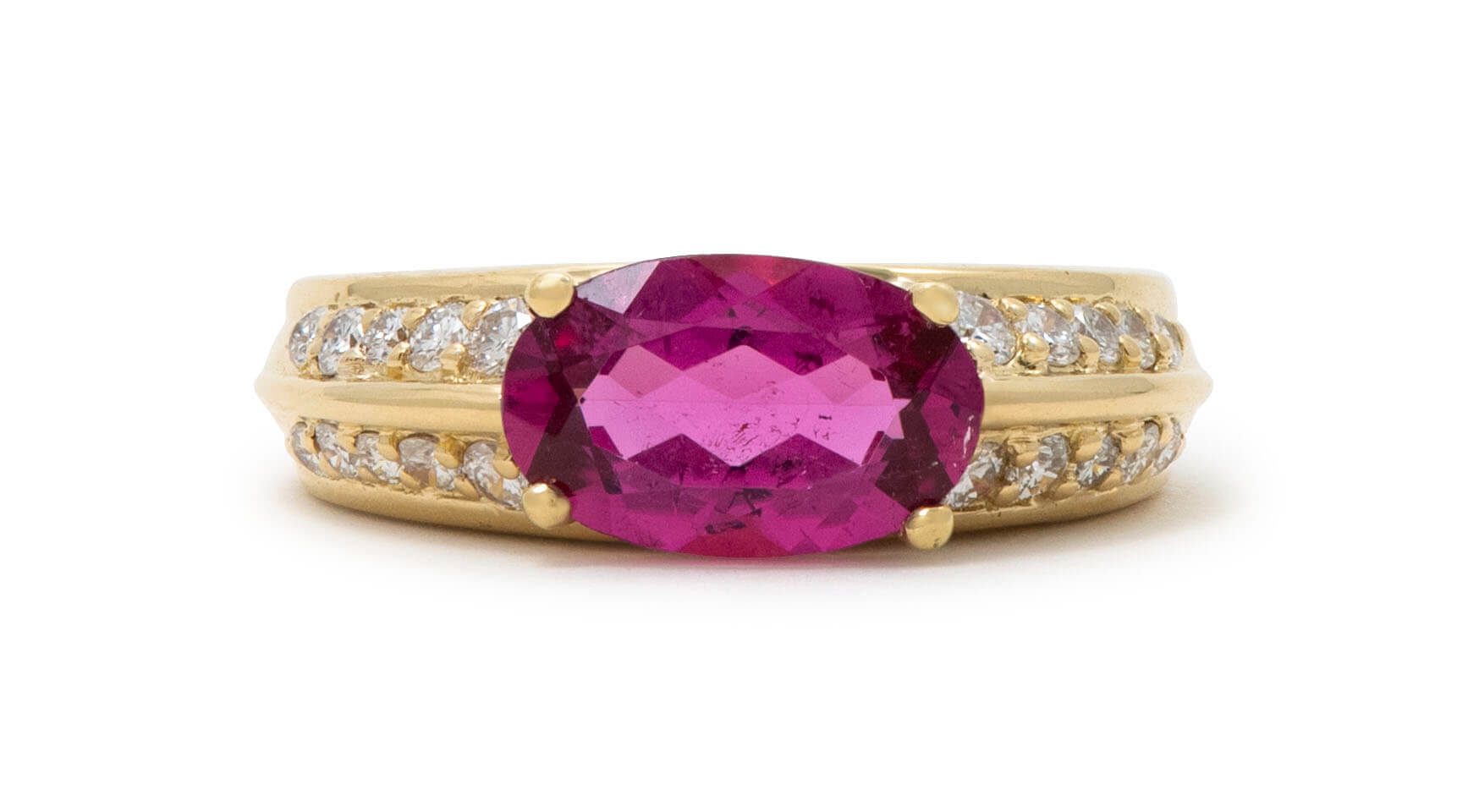
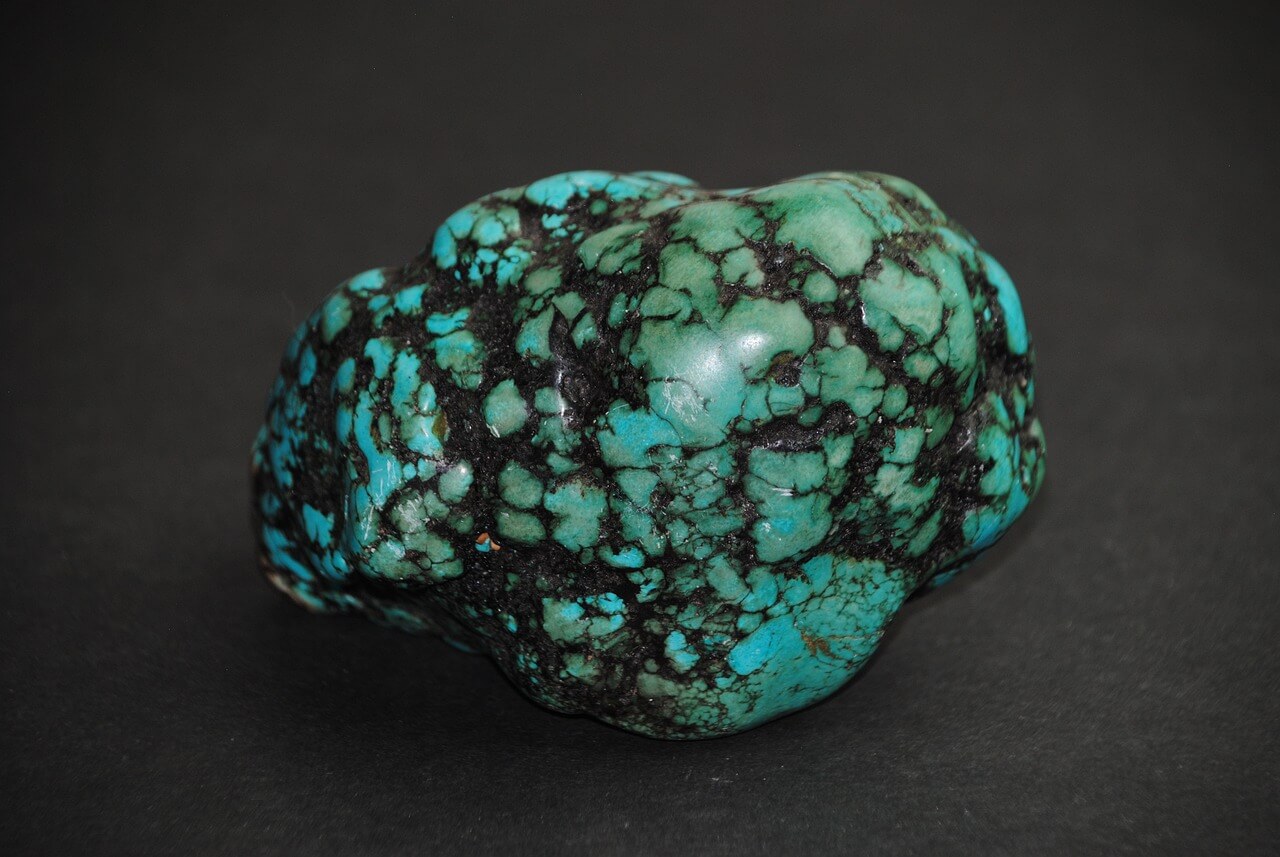
Originally discovered in the Sinai Peninsula of Egypt
Turquoise is only formed in dry copper-rich areas. Turquoise was often very coveted in ancient societies such as the Aztecs, Mayans, and many Native American tribes, and in the early American Southwest. The Apaches believed that Turquoise attached to their bow and arrow increased their accuracy.
As a softer stone, it was often used to carve culturally significant animals and symbols. Turquoise is a 5 – 6 on the Mohs hardness scale. Turquoise colors range from different shades of blue to green. The most notable being the Robin’s Egg blue that turquoise is best known for.
Turquoise was discovered in the Sinai Peninsula of Egypt. Now a majority of Turquoise is mined in the southwest of the U.S. including rich deposits in Arizona, Nevada, and California.